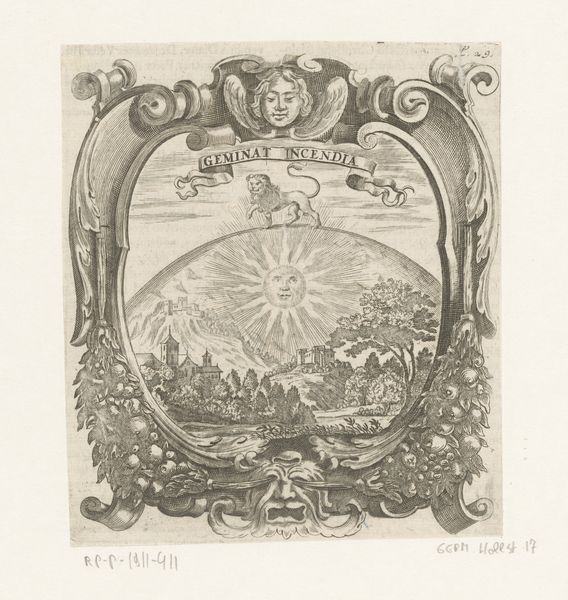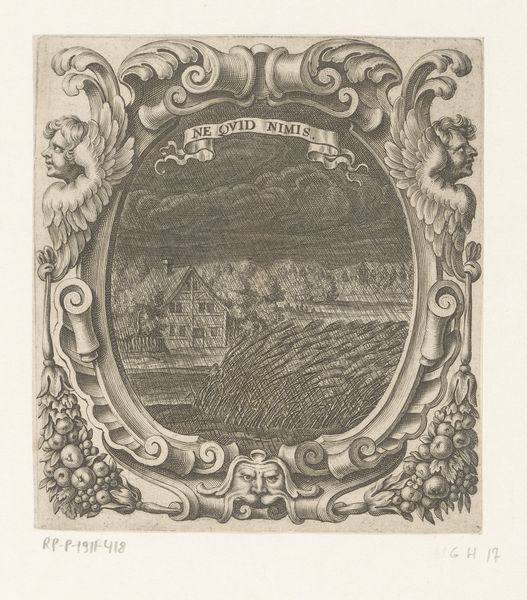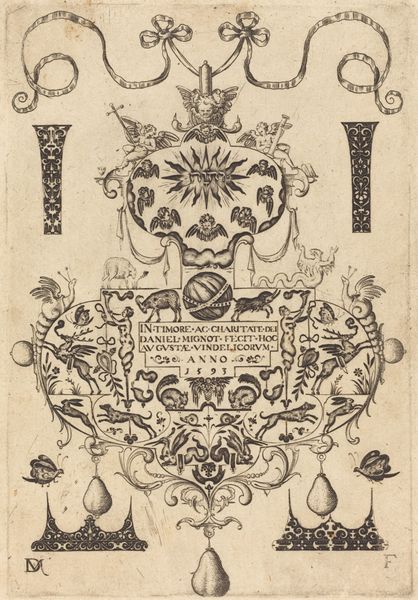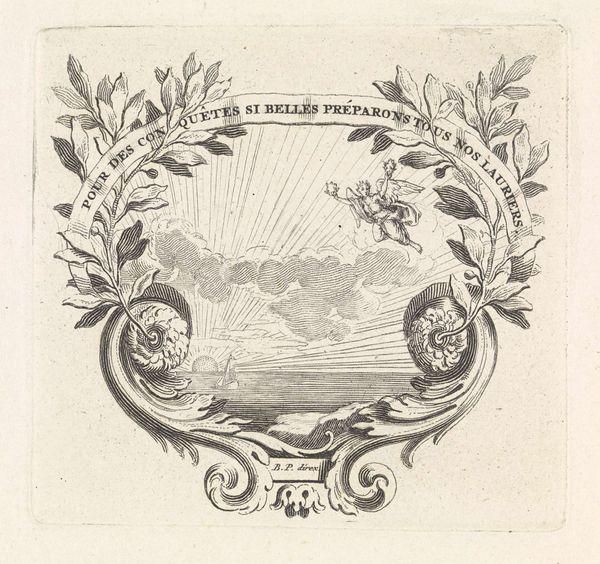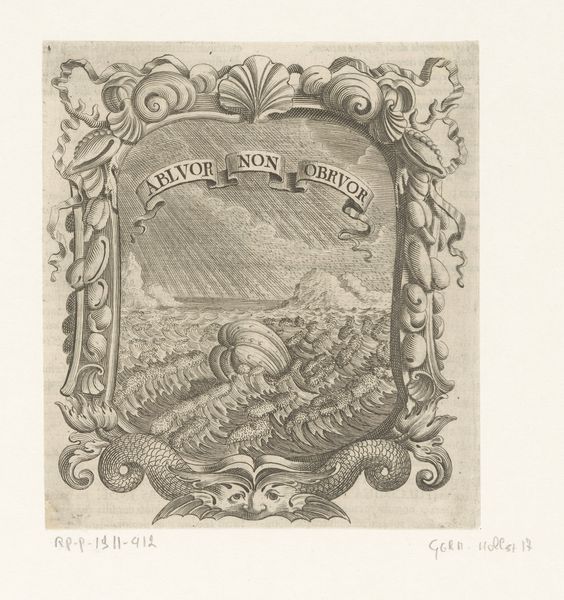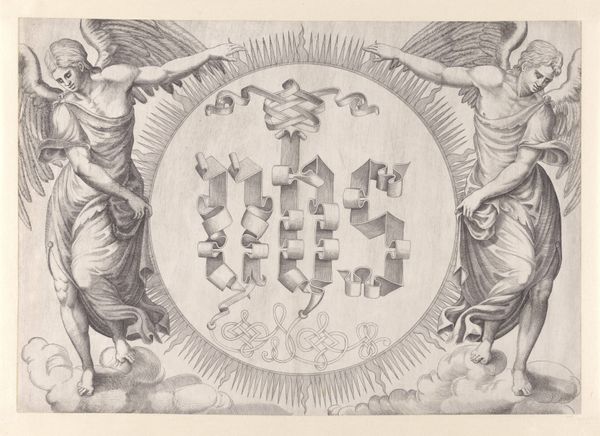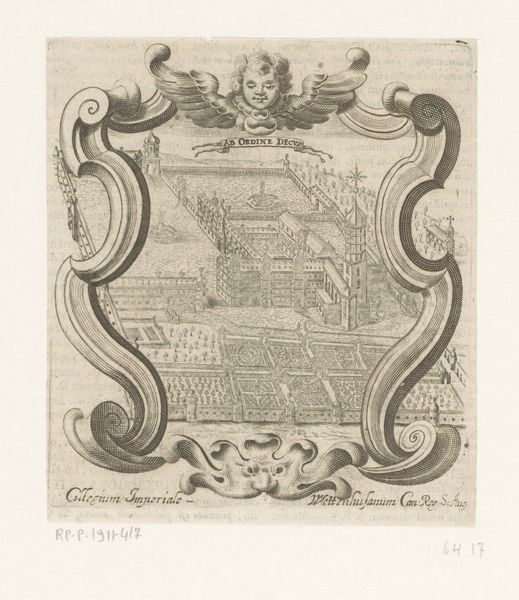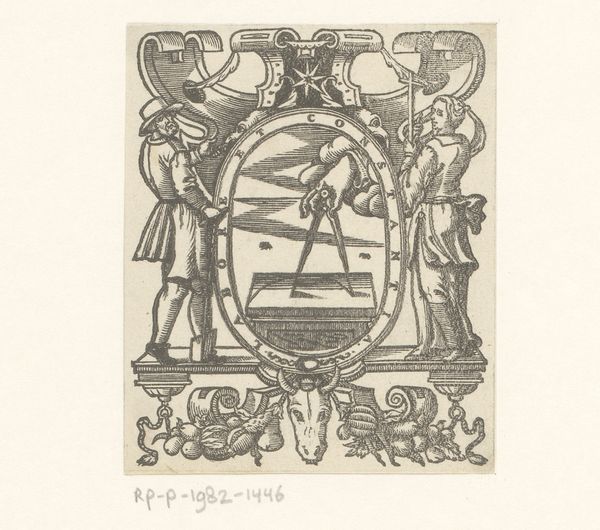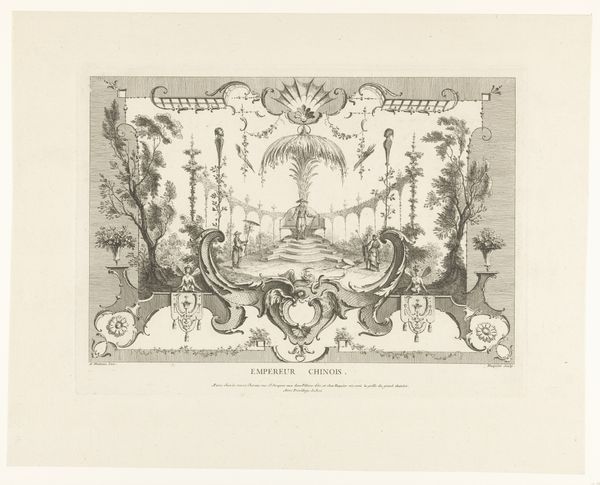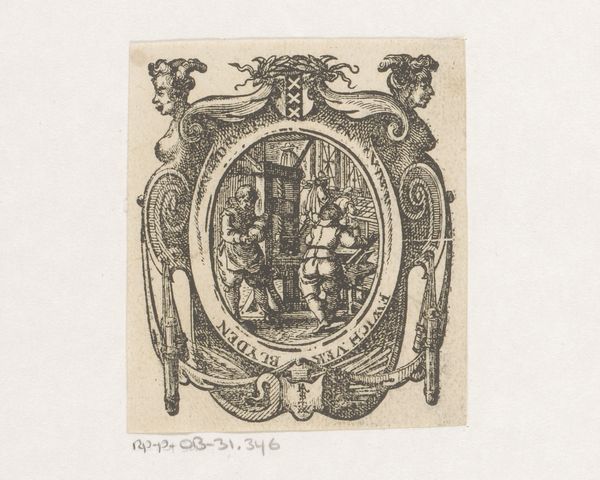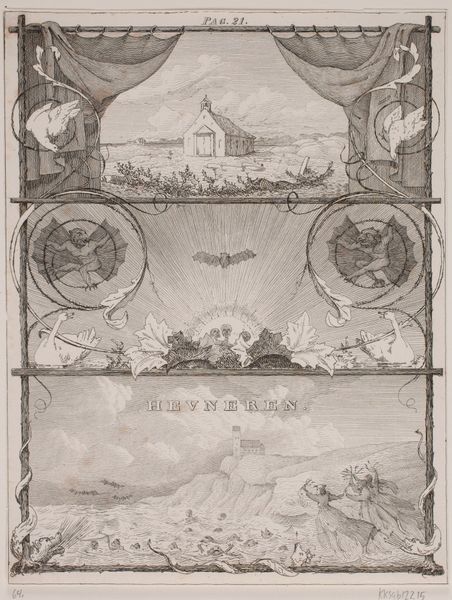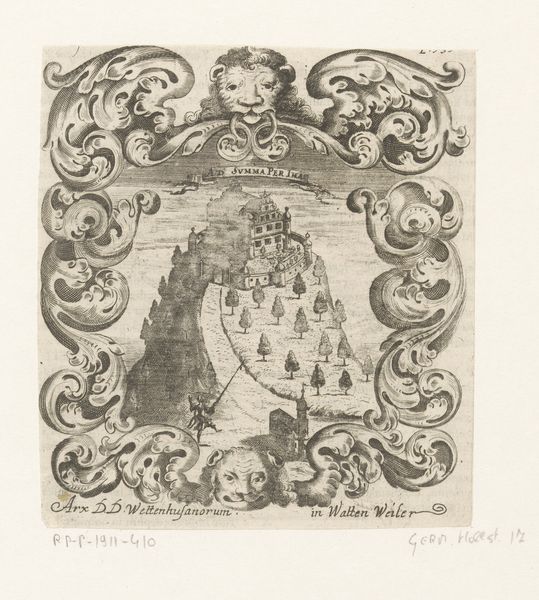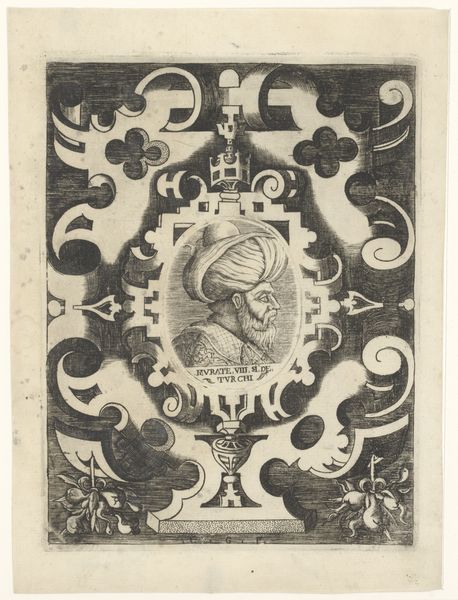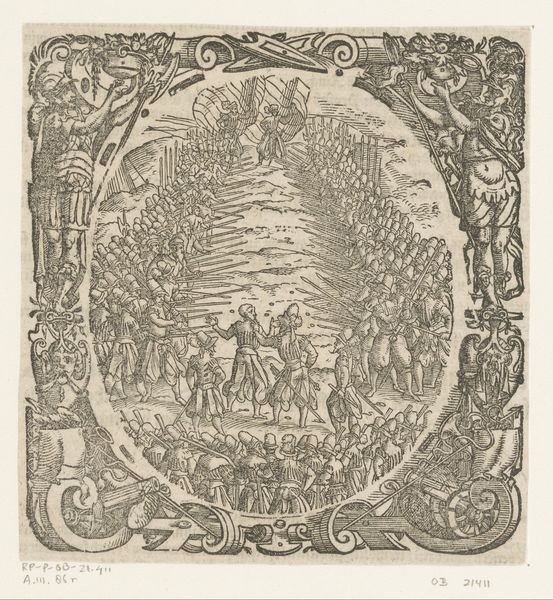
print, engraving
#
garden
#
baroque
# print
#
old engraving style
#
landscape
#
figuration
#
line
#
engraving
Dimensions: height 140 mm, width 122 mm
Copyright: Rijks Museum: Open Domain
Johann Eckhard Löffler created the engraving, “Bewatering,” sometime between 1630 and 1670. During this period, the Dutch Republic was experiencing its Golden Age, marked by significant advancements in art, science, and trade. Löffler’s image depicts a formal garden, precisely laid out, with a large hand holding a watering device over it. The Latin inscription, “Spiritus Modo AdsIt,” translates to “May the spirit be present in measure,” a phrase that encapsulates the era’s tension between human mastery and divine will. The formal garden itself can be seen as an expression of control over nature, a reflection of the period’s burgeoning scientific rationalism. Yet, the presence of the spirit suggests a desire for balance, a recognition of the limits of human endeavor. Consider how Löffler, working in a society undergoing rapid transformation, captures both the exuberance and the anxieties of his time. He encapsulates an era in which the material and the spiritual, the human and the divine, are locked in a dance of mutual influence.
Comments
No comments
Be the first to comment and join the conversation on the ultimate creative platform.
